Once you know how to build a raised bed you'll be able to elevate your outdoor plants, making them more prominent and easier to view and enjoy, especially those with heavenly scents, intricate foliage or small flowers. You’ll also be starting off with fresh, healthy soil, rather than amending what you already have.
You can fill it with different types of compost, such as ericaceous for growing shrubs like azaleas and rhododendrons, or planting soil, especially for veggies or flowering plants, giving you a wider choice of plants that may not normally work in the soil in your garden.
In the ground, you won’t necessarily know how deep the soil is or whether there are layers of old building aggregates or thick clay beneath. Plus, water is able to drain through better when it has been raised up from the ground so there’ll be no more waterlogged soil or rotten roots. And, joy of joys, it’s easier on your back because you won’t have to keep bending down all the time!
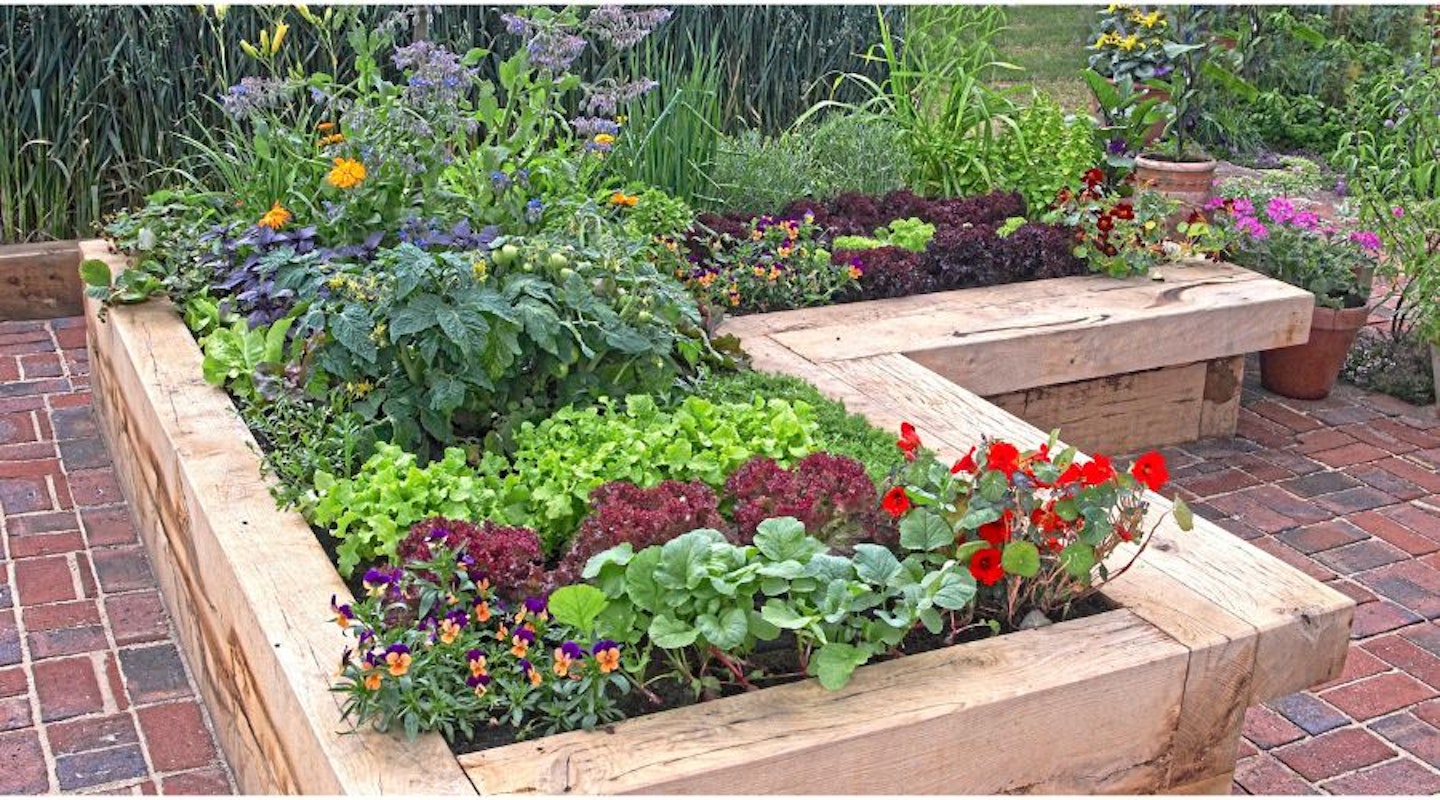
Autumn is the perfect time for adding one as the ground won’t have frozen up yet, making it easy to work with. The cooler weather is easier on your plants if you’re moving them around, as they hate being disturbed when it’s hot and/or dry. It also gives you more time as you won’t be fretting about them sitting for too long and wilting, plus the rain we’ll inevitably get will help everything settle in nicely. Get it done now, and you’ll have a head start on a thriving garden.
We’ve got all the info you need to create your best-ever raised flower bed, whether you’re looking for something simple and cost-effective or a more elaborate set-up, buying or DIYing, what are you waiting for!

Choosing the location and size
When planning your raised bed, think about the height, size, shape and the best place to put it for keeping your garden looking good while making sure your plants or any veg you want to grow on our patio will be happy.
For most, a bed that’s 40cm deep will be fine as you can load it up with compost up to 30cm and still allow for watering so the compost doesn’t splash over the edges. Root crops such as potatoes and parsnips might need a bit more space, but check on the variety to be sure. Taller beds are great if constantly bending down is a no-go, though you should keep in mind that they’ll need a lot more compost to fill.
The size of your bed will depend on the space you’ve got and what you want to grow. Just make sure it’s easy to reach the middle without stepping or falling into it! And of course, you don’t need to go for one large one; several different, smaller size and height ones could be a better option. To keep the look modern, make sure that they’re all the same type. Depending on what you want to grow, sunlight will probably be your bed’s best friend (unless it’s metal), so aim for a spot that gets around six hours a day.
A north-south orientation works well for veggies, but if your garden’s a bit shady, an east-west set-up might be better. Not sure what your garden’s aspect is? Stand against your rear house wall facing the garden and use a compass or app on your smartphone.
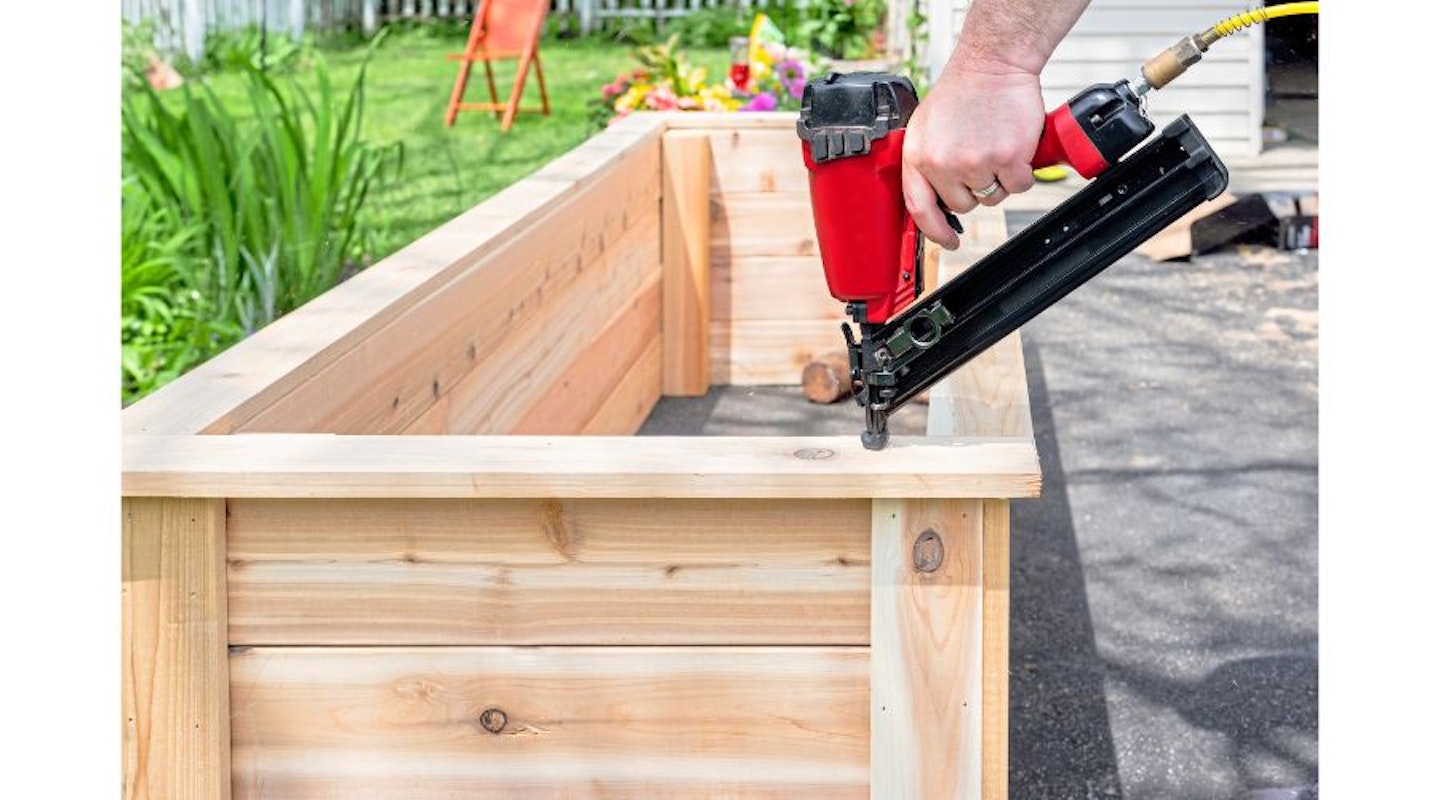
Preparing the ground
The prep is key, but simple, whether you’re placing the bed on soil, decking or paving. If you’re working with soil or grass, start by clearing the area. A weed barrier fabric can help keep those wretched weeds at bay, and it’s a good idea to loosen the soil underneath to help with drainage. For taller beds, you might need to reinforce the corners with battens to keep everything in place.
On paving? No problem, just make sure the surface is level and sturdy enough to hold the weight. You’ll need to think about drainage a bit differently – adding gravel or stones at the bottom can help avoid waterlogging. A damp-proof membrane plastic liner (£30/1 sheet 4m x 5m woodblocx.co.uk), with a few holes punched in it, between the bed and the surface can protect against moisture damage.
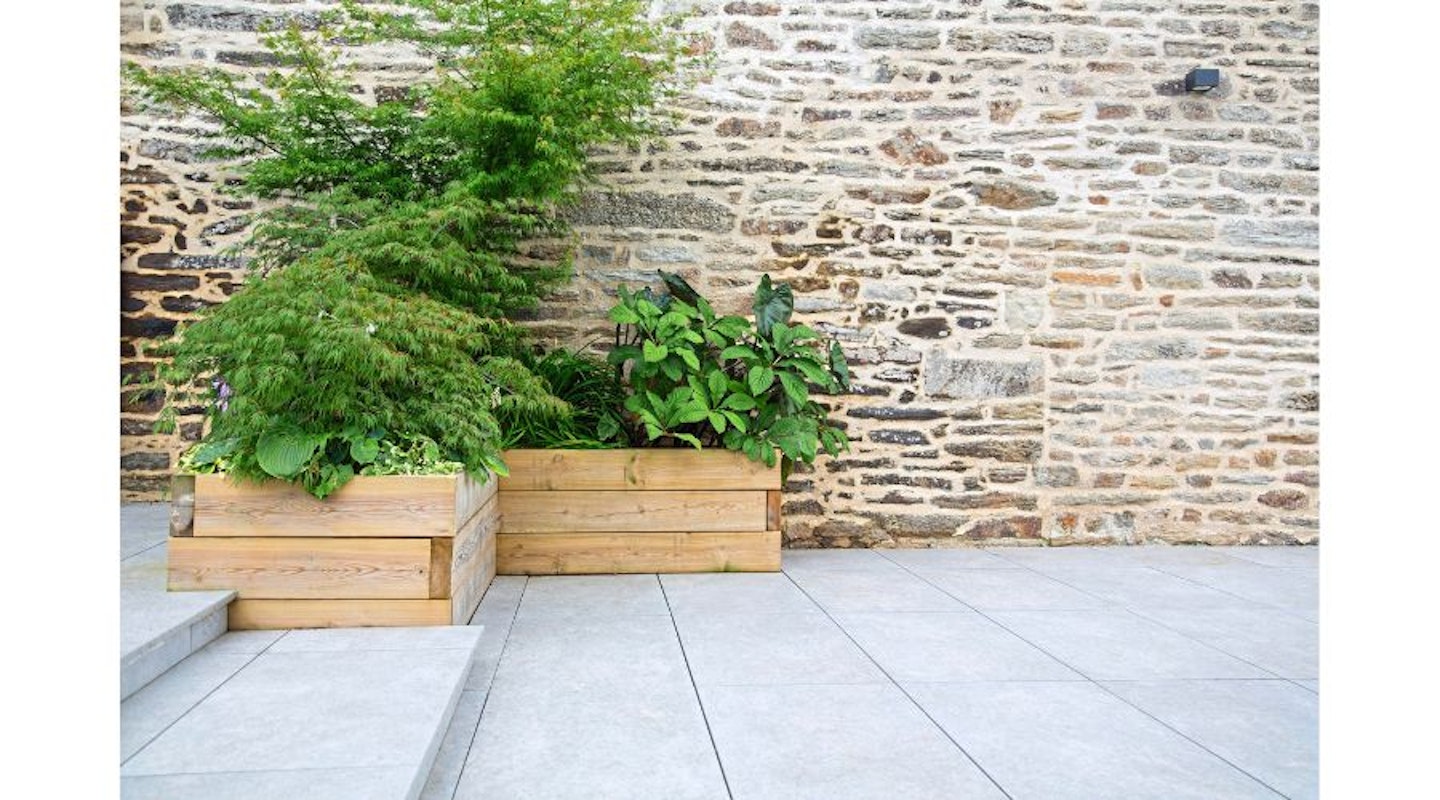
Filling the raised garden bed
For a happy and healthy bed, a good soil mix is key. A 60:30:10 ratio of topsoil, compost and organic matter such as mulch (all easily available from DIY or garden centres) usually does the trick and will provide good drainage and plenty of nutrients. On average a raised bed measuring H1m x W1m will need around 400L to start off.
Over time, everything will settle, so be sure to top it all up with a fresh mix each year in order to keep everything going in tip-top shape.
Planting in your raised garden bed
The compost in a raised bed stays warmer than soil that’s in the ground, which allows you to start your growing time earlier on in spring, with much better drainage. As the majority of plants tend to thrive best with this combo, they will need little help from you. Fill with a mix of evergreen and deciduous shrubs (ones that lose their leaves in winter) along with fancy foliage and gorgeous scented blooms so it’ll look good all year long.
For inspo, here are some more unusual ones to try that love a raised bed environment…
Paper bush
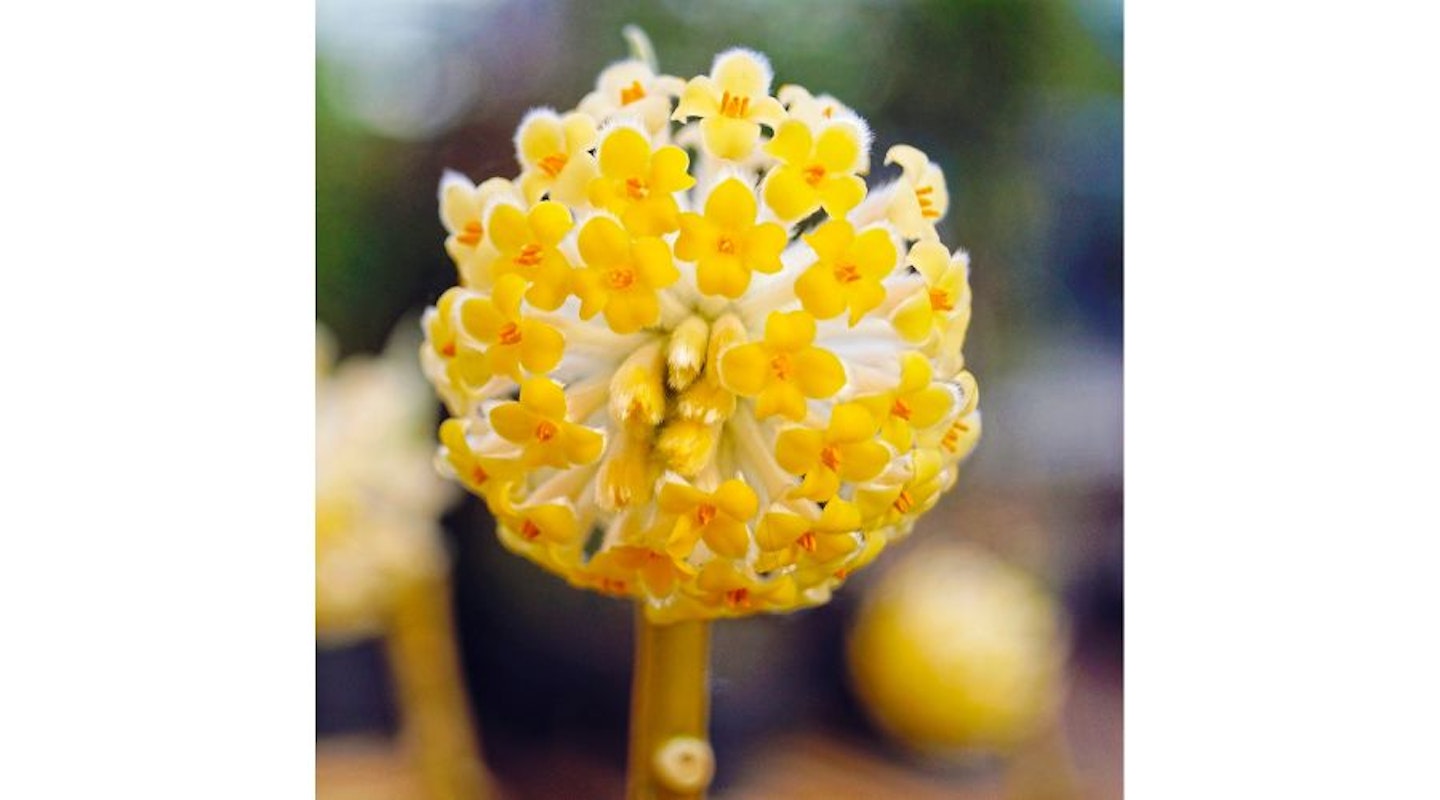
This is loved for its strong-scented, bright yellow flowers, which appear in clusters on the tips of the bare stems and open in late winter. Height & Spread 1.5m, £24.99/1L pot crocus.co.uk
Euphorbia ‘Black Pearl’

With evergreen lime-green leaves and long-lasting flowers that each have a black eye, this compact shrub will add constant appeal. Height 80cm Spread 50cm, £9.99/9cm pot rhsplants.co.uk
Golden hakonechloa ‘Alboaurea’
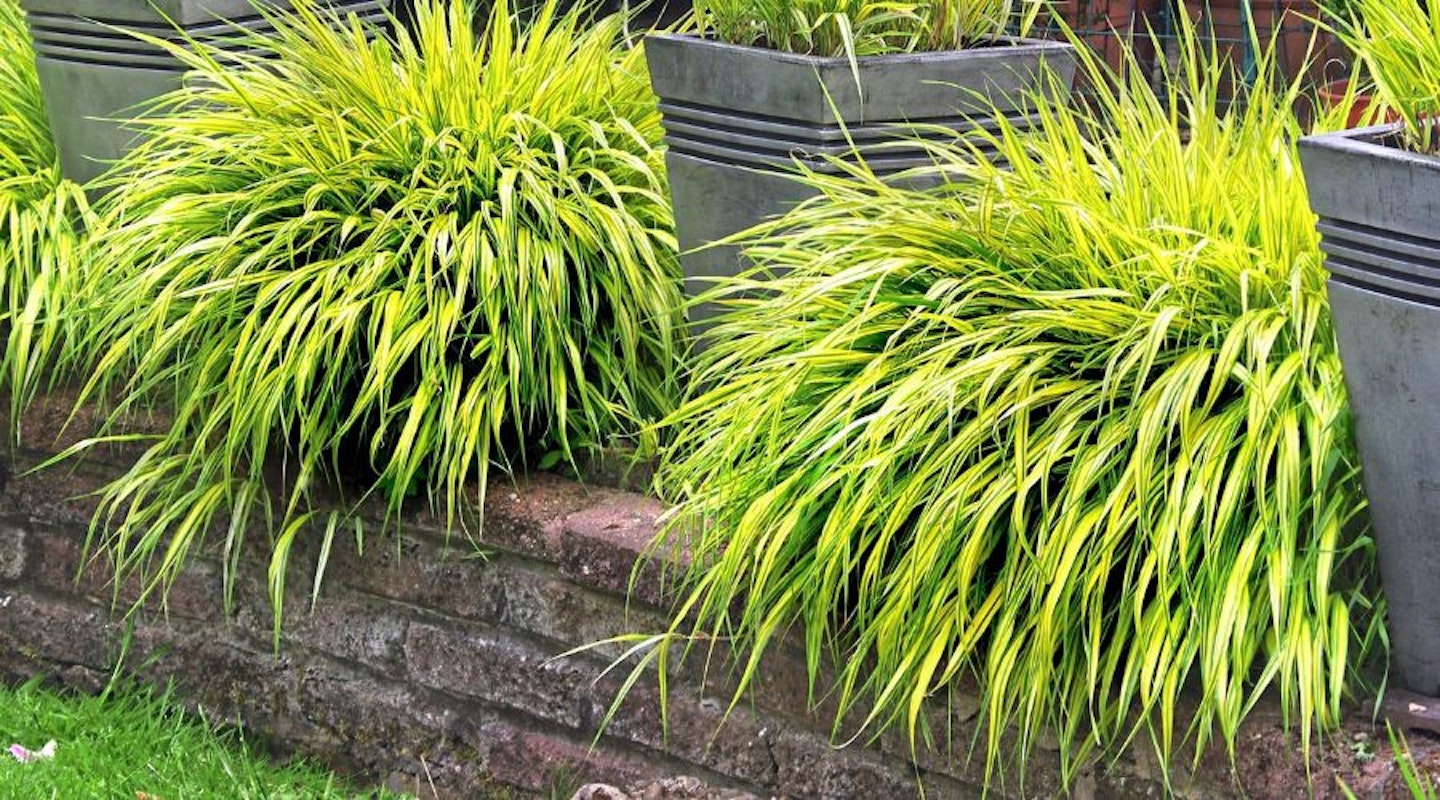
The low-level hummocks of vividly striped, yellow and green deciduous leaves are great for cascading over the edges of a raised bed. Height 35cm Spread 40cm. £19.99/2L pot crocus.co.uk
Love-lies-bleeding
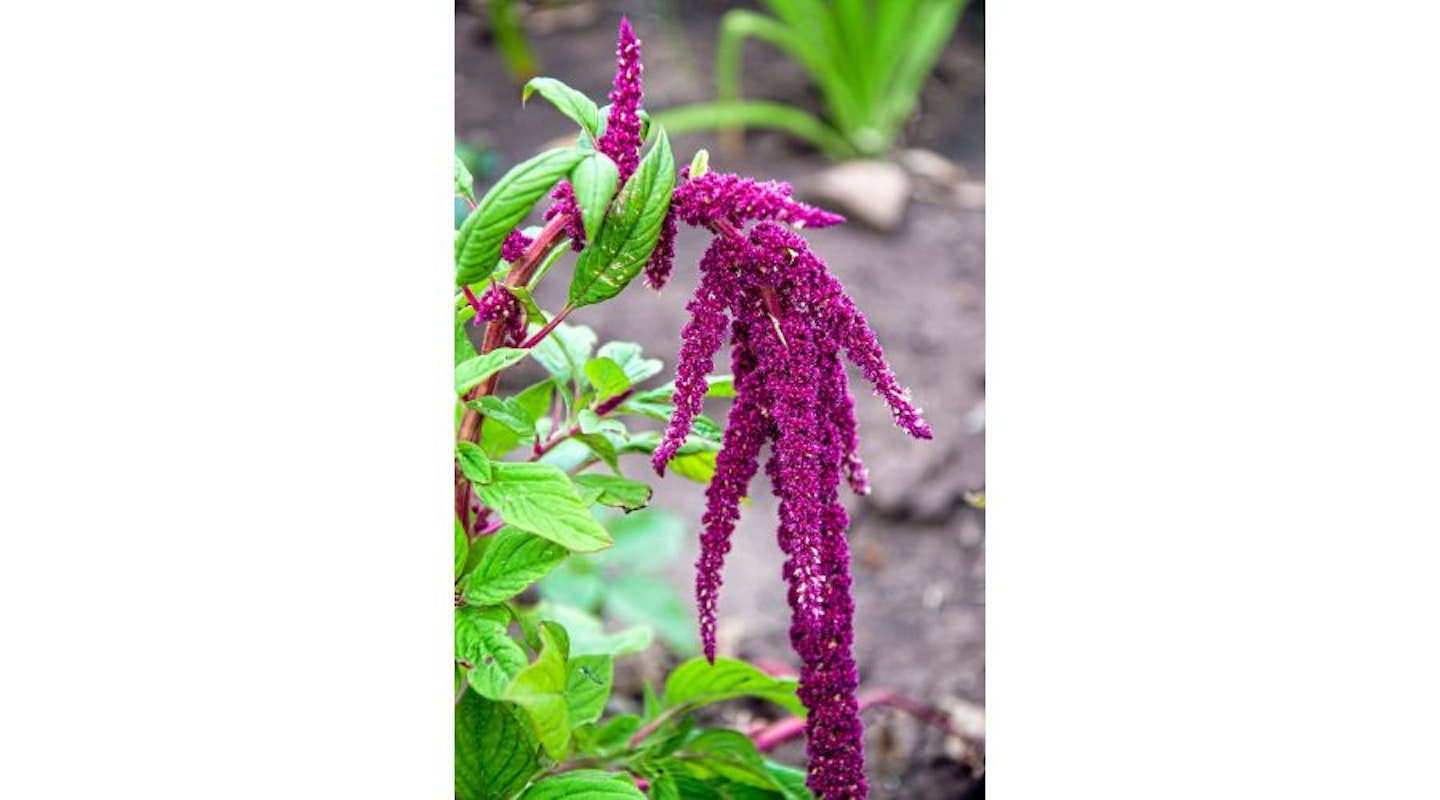
Also known as amaranthus, this is the plant to put around the bed edges so its stunning, dripping blooms can be best admired. £10.95/jumbo plug plant 2014ukkru at ebay.co.uk
Rose ‘Bonica’

Who knew that a rose would thrive so well in a little bed? This compact shrub variety with its beautiful and dainty sprays of fragrant blooms July-Sept is the one to go for. Height & Spread 1m. £23/bareroot davidaustinroses.co.uk
Schubert’s allium

This has flowerheads in May-July that resemble a starburst of fireworks! Plant the bulbs now until November. Height 60cm Spread 30cm, £13/5 bulbs hayloft.co.uk
Raised garden bed FAQs
Why should I use a raised garden bed instead of traditional in-ground planting?
Raised beds are a fantastic and rewarding way of growing a wide variety of plants and are especially popular for growing fruit and vegetables, says garden writer Andrew White. They are great for improving drainage and can be used to introduce a different soil type to your garden. You also get the benefit of warmer soil earlier in the season and less soil erosion.
Another big plus is that raised beds are a convenient way to garden if you have restricted mobility, as they reduce the need to bend. What gardener would pass up the opportunity to save their back? Raised beds also add depth and colour to your landscape, giving you complete control over your planting area, and are available in many shapes and sizes.
What materials are best for building a raised garden bed?
There are lots of different materials to choose from to match your garden theme and add stylish structure. Bear in mind that if you’re buying a kit, they probably won’t need as much pre-care as buying your own materials and building from scratch, as it won’t involve measuring, cutting, sawing, sanding or treating.
Wood
A traditional option but always in style, there are several types on offer. Untreated boards are cheaper (around £6/ L1.2m) but might need a bit more TLC over time, with a lick of toxic-free preservative to help them last longer. Try Eco Wood Safe, Natural Wood Treatment, £15.95/4.5L gardening-naturally.com.
Avoid pre-treated or pressure-treated boards as they may contain harmful chemicals. Planed boards offer a smooth, splinter-free surface and while they might cost a bit more, the finish is worth it for a polished and professional look. Try Planed All Round Timber Boards, L3.6m x W17cm x D2cm, £78/4 diy.com.
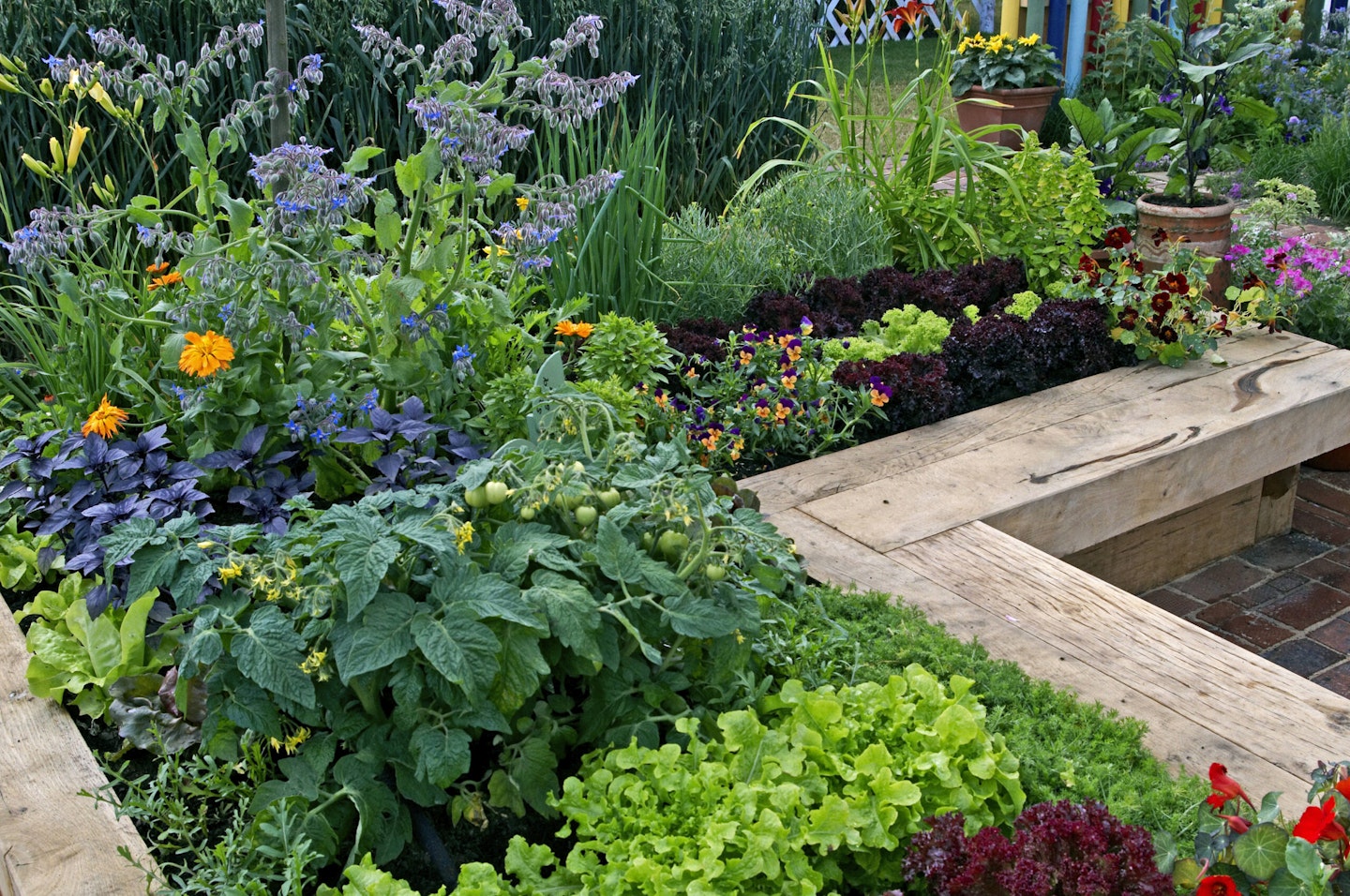
Just make sure that any wooden boards you choose are thick enough to handle the pressure of the compost and water so they don’t warp or bend. Ideally, the boards should be at least 2cm thick, and a vertical stacked height of around 30cm suits all sorts of plants and their differing root lengths. The higher and bigger your raised bed is, the thicker and more robust the boards need to be. This is when tough and sturdy sleepers are the best option. One option to try is the untreated Green Oak Sleeper, L2.4m x W20cm x D10cm, £50.88 hermeq.com.
Remember to line the inside of any wooden beds with liner, old compost bags or other recycled plastic sheeting to protect the wood from damp compost which could cause rotting or warping.
Brick
If you’re after something that’s going to stay put for a long time with very little maintenance, then bricks might be your best bet. Engineering bricks are weather resistant (79p from diy.com), unlike domestic bricks which are porous and therefore less durable.
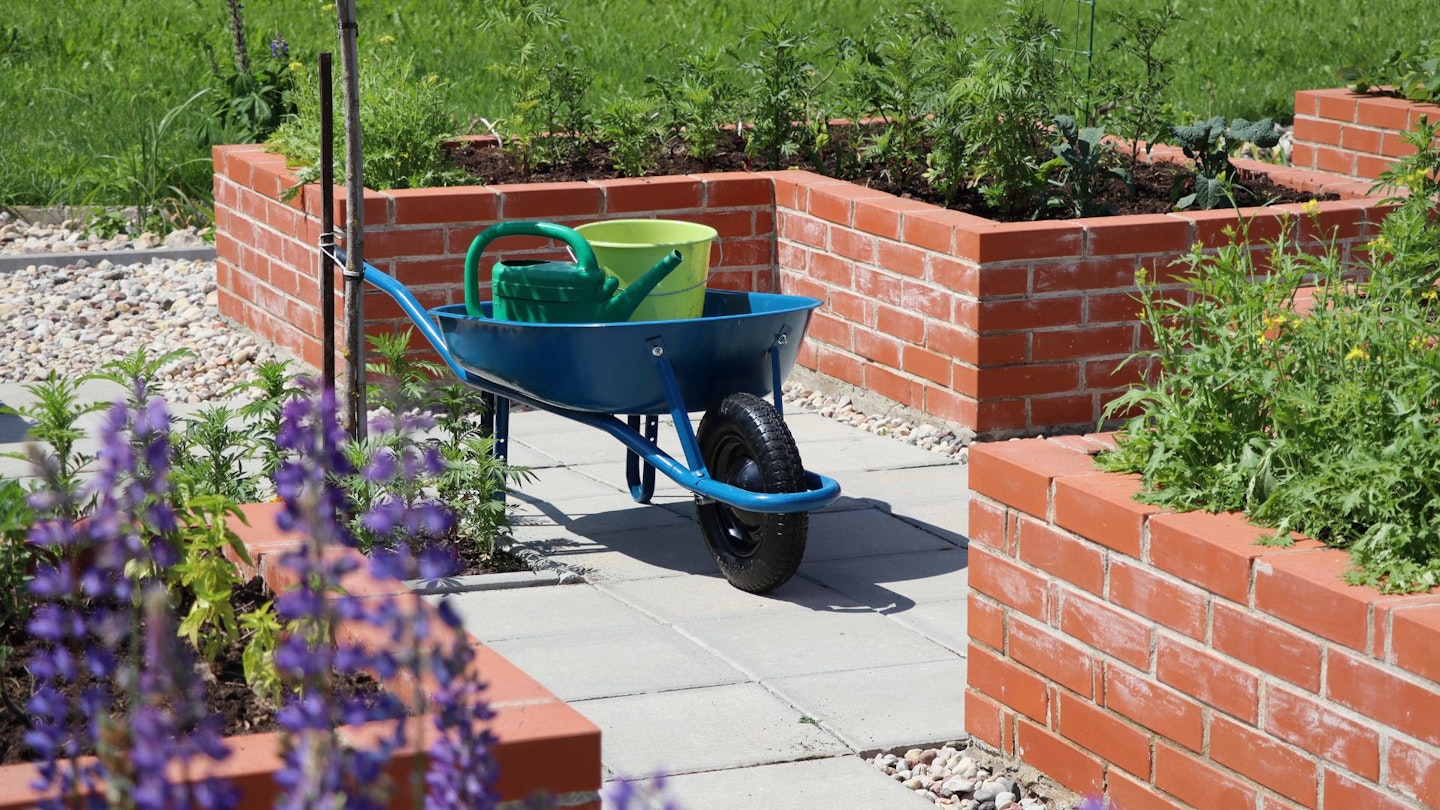
Unless you’re a keen DIYer it may need a pro’s touch if you’re aiming for anything vaguely perfect-looking, which will cost around £60-120/m2. Search for a bricklayer or builder on checkatrade.com.
Steel
For those who love a contemporary vibe, steel is the way to go. Galvanised steel is treated to resist rust but some online kits can be pretty flimsy so it’s worth searching for, and probably spending a bit more on, one that’s made using strong, thick steel. Corten steel is a mix of copper and steel alloys, naturally weathers outside and turns from grey to a rusty orange-brown. The rust forms a protective layer so there’s no need for any maintenance from you.
Steel-raised beds are built to last, though they can heat up in the sun, so be mindful of where you place them – a spot that gets sun in the morning and is in shade in the afternoon is best – and what you grow in them, as plants that hate their roots being warm all day, such as hydrangeas, won’t be happy. Unless you’re an expert in steel-working, you’ll want to buy them ready-formed.

The Original Veggie Bed kit (£99.99 dobies.co.uk) is made from specialist steel and coating and can be assembled into six different shapes, while Taylor Made Planters Ltd (taylormadeplanters.co.uk) sell a Corten-steel bottomless tube measuring D80cm x H40cm for £195, un-weathered, which means it’s a steel-grey colour but will weather to a rusty patina after about seven months or so, or buy it pre-weathered/pre-rusted for an extra £37.50.
Pallets
You can buy these online, or if you’re near a distribution warehouse or similar you can probably nab a couple for a few pounds. They’re made from lightweight wood but it’s the way they’re constructed that makes them strong. So, it’s best to use them as they are, because if you take the pallet apart the boards are quite flimsy, and it’s a tough job to remove all the industrial nails! You should also make sure you line the inside as you’ll have no idea where the pallets have been transported from or what they’ve been in contact with, and give them a coat of wood preservative to help prolong their life.

Stones and slabs
Rustic vibe or contemporary, the way that these are constructed can create totally different looks. And what’s great about using them is that they can be built into any shape or style you like, from comforting curves to linear stacks. This isn’t really a DIY option as you’ll need to get in someone who is savvy about how to layer them up and make the shape and style you want. The cost of a pro is around £150 a day. Search garden wall or bricklayer on ratedpeople.com.

Should I DIY a raised bed or buy a kit?
Going the DIY route means you can create a bed that fits your garden like a glove. It’s perfect if you’ve got an odd-shaped space or fancy using up some leftover materials. It does take more time and a bit of skill, but if you’re up for it, the results can be fantastic. For a wooden one, visit diy.com and run a search. If you’re short on time or DIY isn’t your thing, kits come in all sorts of materials, with pre-cut pieces and step-by-step instructions. Some kits are so simple that you can have a new bed up in a few hours – perfect for a quick weekend project.
Want the heavy-duty rustic vibe of wooden sleepers? Try the Sleeper Raised Bed Kit (L1.3m x D70cm x H40cm, £185), available from gardensleepers.co.uk, with screws, a drill bit and easy instructions.
For a modern metal creation with a high-end finish and accessories such as a cold frame add-on, the modern metal Biohort Raised Vegetable Bed is the one. L1m x H77cm x D53cm, £409 and available in three different grey finishes at biohort.com.
The Build-A-Bed kit made from recycled plastic is probably one of the easiest and quickest options, plus you can stack them up. L1m x W1m x H15cm, £34.98 gardenskill.com.
What kind of soil should I use in my raised garden bed?
The best soil type for raised beds depends on what you intend to grow, so it won’t be the same in all situations, says garden writer Andrew White. Some plants, such as blueberries, thrive in acidic soil, while others prefer soil with a higher pH. The weather also plays a role. In a hot, dry climate, you’ll need soil that retains moisture, but drainage may be an issue in an area with clay soil and abundant rainfall.
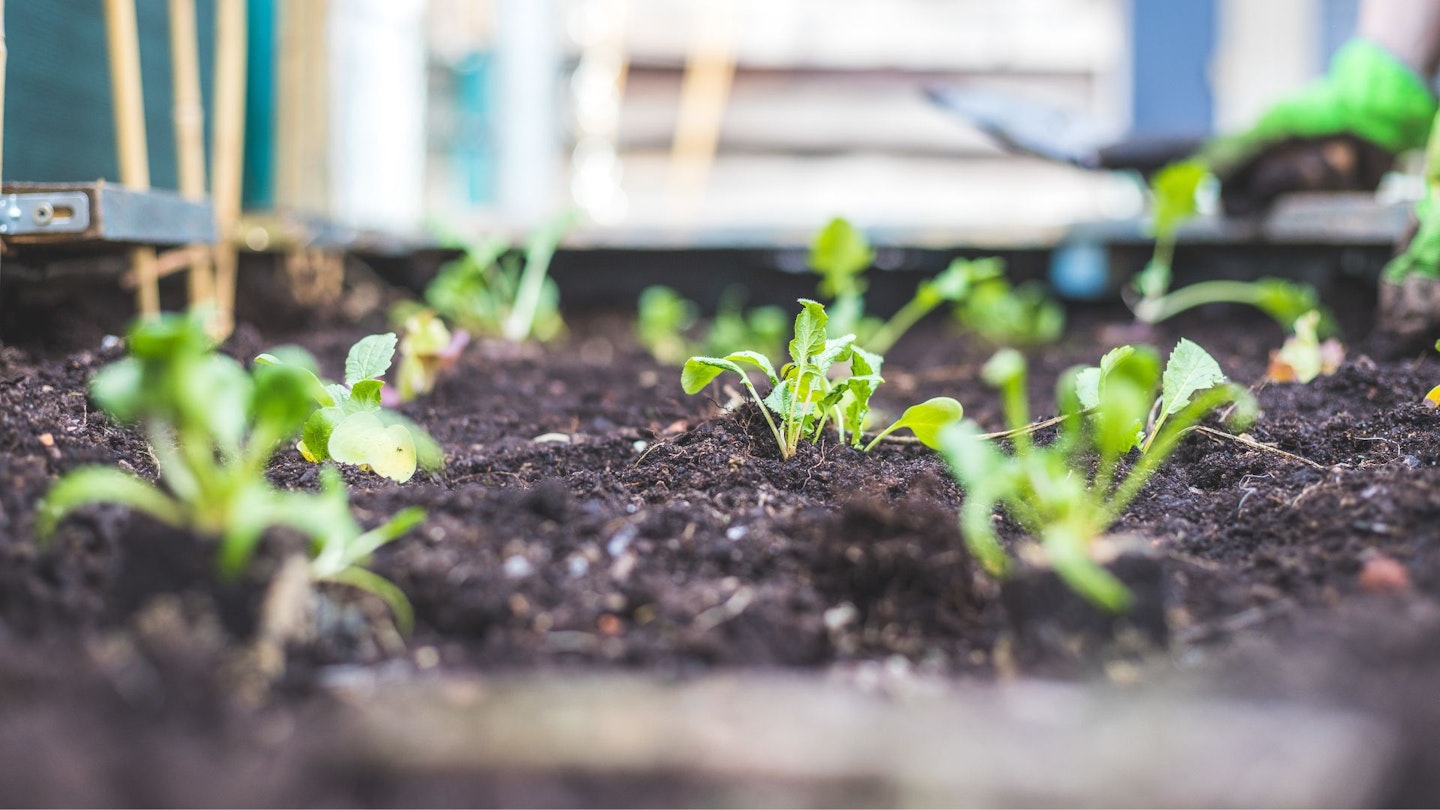
A big plus with raised beds is that you’re not limited to what you have in the ground. You can start from scratch and build a soil type for raised beds that is adapted to the kind of plants you want to grow and your region’s unique growing conditions.
Using half topsoil and half organic compost is a good way to start building a raised bed soil mix. Alternatively, you can make a base soil by combining equal parts peat moss, coarse horticultural Vermiculite and good quality organic compost. It’s a bit like being a chef in the kitchen – you have the freedom to experiment. But one important component is a balanced, slow-release organic fertiliser.
Will I need to water a raised bed more?
Think of your raised bed like a pot or container so yes, you will, as opposed to ground soil. Check its moisture level by poking a finger in; if it’s dry below that, it needs a good soaking.
How can I make a wooden bed look modern?
Just paint it using a non-toxic exterior wood paint. Try Auro 560 Natural Wood Stain which has many different colours to choose from. £35/750ml organicnaturalpaint.co.uk.
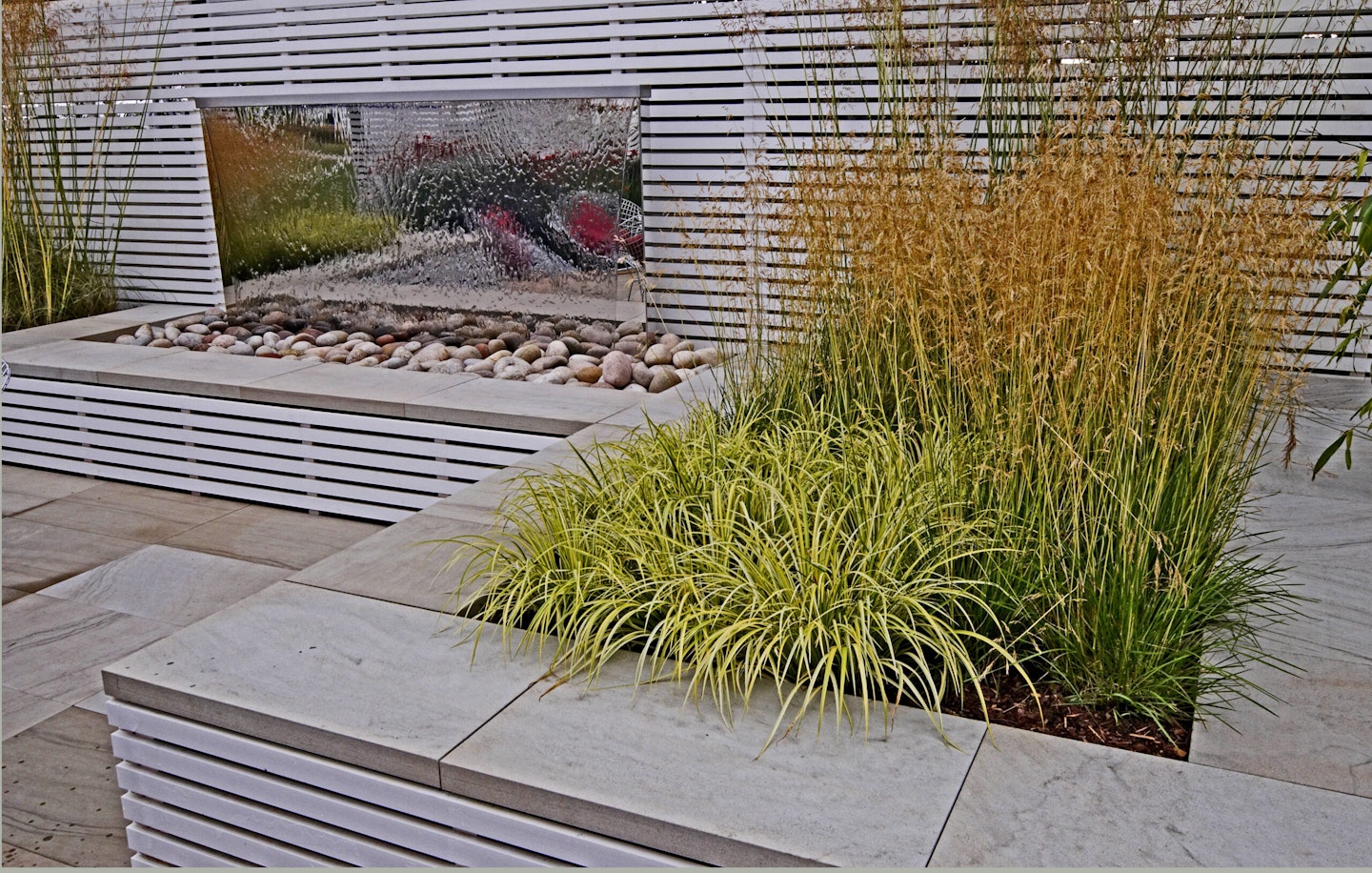
Can I grow veg and plants together in the same bed?
Absolutely. You just need to make sure that they all need the same type of compost and lighting – check their labels to find out. For example, carrots and marigolds are great bed partners, as is lavender with leafy veg such as kale and spinach.
What to read next:
Subscribe to Modern Gardens magazine and get the most out of your outdoor space. Discover everything you need to know to make your outside space look fantastic, quickly and easily, with hundreds of simple ideas, designer tricks, affordable products and expert advice in every issue of Modern Gardens. View our latest subscription offers to save on shop prices.
Jules Barton-Breck is a freelance journalist and she writes an eclectic mix of features every month for Modern Gardens magazine, of which she is a former editor.
